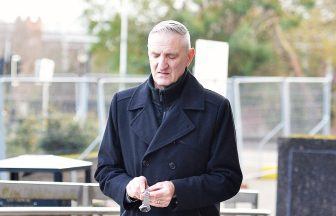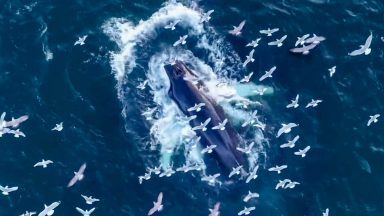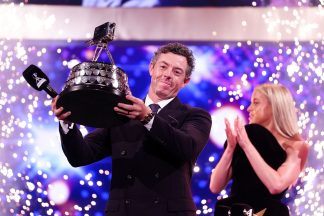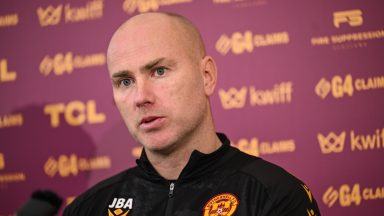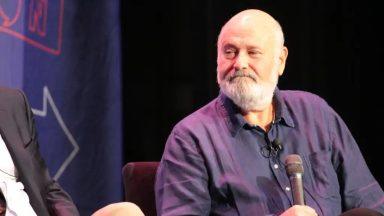“It’s now time to put us on the block and hold us to our word. It’s time to put our neck out there and do what we know we can do.”
Blair Kinghorn’s final words of the autumn series could not have given a greater insight into Scotland’s mentality heading into 2025.
The 27-year-old full-back embodies the entire team’s progression—growing from promising talent to world-class player, from an impish character to a role model with more than 50 caps to his name.
Joe Schmidt, who won three Six Nations championships with Ireland and now coaches Australia, told reporters after Scotland’s 27-13 thumping of the resurgent Wallabies at Murrayfield back in November that the Scots were now in their ‘sweet spot’ – a combination of class, experience and continuity through the squad and the coaching team.
But for these last seven years of Gregor Townsend’s reign as head coach, there has always been hope that this was the year, that this was the generation of players who would finally deliver a Six Nations title.
What could make this one any different?
In leadership terms, Townsend would appear to have solved the puzzle by handing the role outright to Glasgow Warriors centre Sione Tuipulotu.
Since Greig Laidlaw’s record 39 caps as captain, Townsend has shuffled through his on-field leaders with John Barclay, Stuart McInally, Stuart Hogg, Grant Gilchrist and Hamish Watson (co-captains), Jamie Ritchie, Rory Darge and Finn Russell (co-captains) all taking the honour.
Tuipulotu has grasped the opportunity of leading the national side with his teammates and Townsend himself speaking positively of his impact in the dressing room. The Australia-born midfielder looks set to stay in post and provide continuity at the top of a broad base of leaders.
It has been levelled at Scotland that they lack the necessary grunt to stay the distance when big tests become an arm-wrestle and that for all their attacking spark teams over the years – such as Ireland and the Wales of Warren Gatland’s first spell – could draw them into a physical battle and prevail.
The autumn provided a view of a Scotland that can live with the big beasts, going toe-to-toe with the ferocious Springboks and even matching them while down to 14 men, before going down 32-15 with two late tries giving an unfair reflection of a tight game against the world champions.
When Australia arrived in Edinburgh a fortnight later with the wind in their sails from high-scoring wins over England and Wales, Townsend’s men suffocated the tourists with big-hitting and forward domination.
“I think Scotland in the past maybe have been classed as being able to do all the flairy things, scoring from anywhere, but didn’t have that hard edge when it came to our defence,” said back row Matt Fagerson after that game.
“I think we’ve shown that in the last year or so, that we’re a very tough team to break down, and the physicality against South Africa, and then against Australia, I think that’s a great benchmark.”
Priding yourself on physicality is one thing but it requires depth to carry it out at the highest level, which it what is required in the brutal attrition of the Six Nations
Injuries happen – back row Jack Dempsey was ruled out of the autumn after taking a huge blow to his shoulder against South Africa – and while Scotland are growing in this department they still cannot call on the sort of well of resources available to France, England and Ireland.
To suffer casualties and retain hope of winning the championship, Scotland needs more top-level depth in the front row. They hope promising talent at lock can step up if required and that their back row strength can survive if changes are forced upon them.
The Six Nations kicks off with Italy visiting Murrayfield, flush with confidence from beating the Scots in Rome last March.
Ireland, the champions and a team that Townsend has never tasted victory over as head coach, are next in Edinburgh before an off week and the middle fixture trip to Twickenham,
Scotland is in a historic run of good form against England, having lifted the Calcutta Cup in six of their last seven meetings.
The final two games see struggling Wales head north of the border before a Super Saturday finale against France in Paris.
If any further motivation is needed, there is also a British and Irish Lions tour to play for.
Already, Tuipulotu, Finn Russell, Duhan van der Merwe, Darcy Graham, Blair Kinghorn, Pierre Schoeman and Zander Fagerson are being spoken of as likely tourists. Many others, including Huw Jones, Ben White, Jack Dempsey, Matt Fagerson and Rory Darge, can lay a strong claim to being on the plane for the tour of Australia if they produce the goods for the thistle this spring.
And while the Lions take on the Wallabies over three test matches in July and August, Scotland will be in the Pacific playing games against Fiji and two other nations yet to be decided.
The summer will be another chance to grow depth after exciting young players like Freddie Douglas, Harry Paterson and Ben Muncaster emerged in 2024.
“We’ve got a very good, very experienced team, but it’s not going to last forever – we know we have to make the most of it,” insisted Kinghorn in the depths of Murrayfield after that Australia victory.
The window of opportunity is open for Scotland, but the clock is ticking before it closes again.
Follow STV News on WhatsApp
Scan the QR code on your mobile device for all the latest news from around the country


 SNS Group
SNS Group









